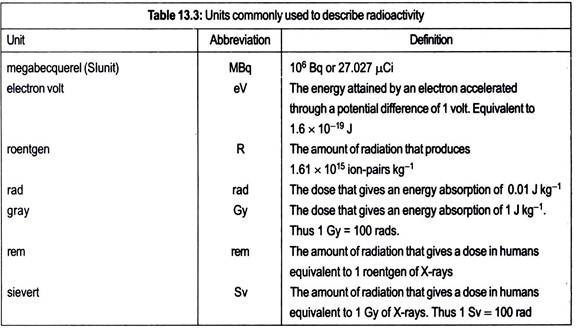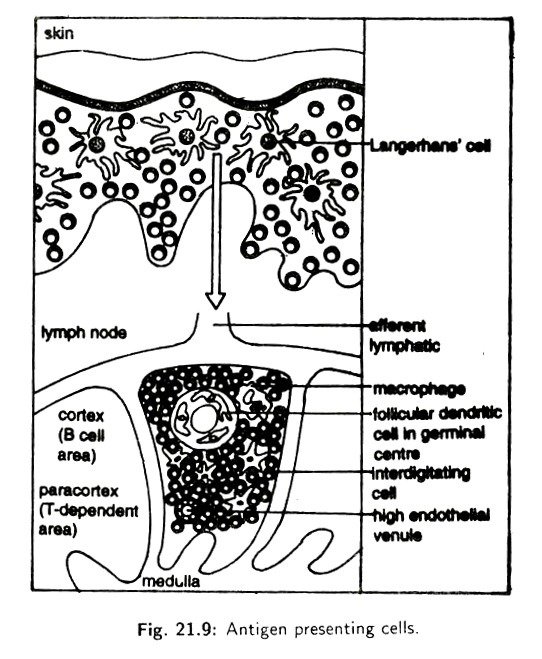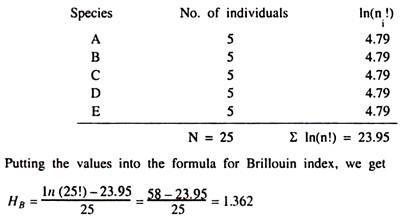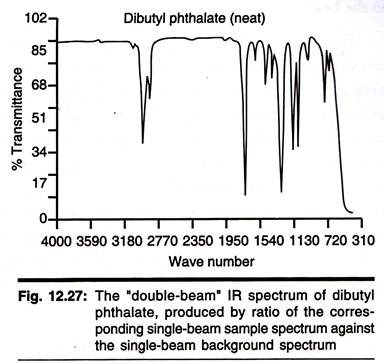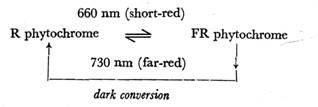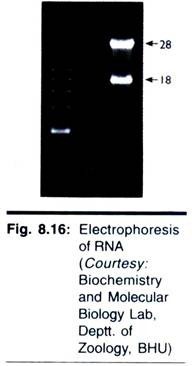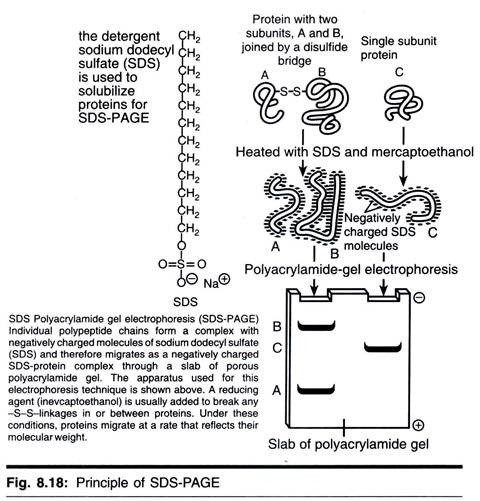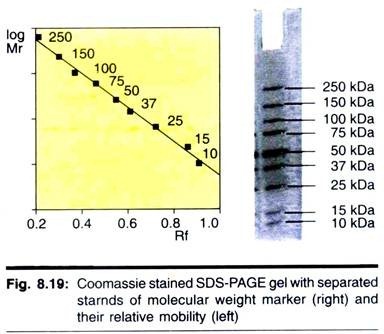In this article we will discuss about the chromosome abnormalities in human cancer cell.
Many human cancer cells have chromosome abnormalities and frequently specific abnormalities are associated with specific forms of cancer. Chromosome abnormalities in human cancer cells can involve both the number and, more frequently, the structure of the chromosome. Number of abnormalities are mostly due to non-disjunction and fail to migrate properly at anaphase.
Structural abnormalities in chromosome arise through errors in breakage and reunion and can involve deletions (del) inversion (inv) and reciprocal translocations (t). In addition some cancer cells have enormous amplifications of specific DNA sequences. These amplifications may be located within a chromosome where they appear as homogeneously staining regions (HSRs) or they may be present on tiny chromosome called double minutes (DMs).
The first specific chromosome abnormality to be associated with cancer was the Philadelphia chromosome (Ph1). This small chromosome Ph1 is present in the leukemic cells of at least 90% of patients with chronic myelogenous leukemia (CML), involving uncontrolled multiplication of myeloid stem cells.
Actually Ph1 is derived from a chromosome 22 by a reciprocal translocation involving chromosome 9. The Ph1 might lead to activation of the abl protooncogene (abl gene was first discovered as the transforming gene of the highly oncogenic; refer to Table 16.4).
Another example is Retinoblastoma, which is an eye tumor of children and is one of several heretable forms of childhood cancer. Retinoblastoma is inherited as a highly penetrate autosomal dominant trait, and a child who inherits the single gene predisposing to retinoblastoma will almost certainly develop the tumor. Probably all forms of retinoblastoma involve abnormalities in band q14on chromosome 13, and in some cases these are visible microscopically as a deletion of the q14 band.
Tumor cells lack a normal chromosome 13 and are homozygous for the deleted version of chromosome 13. Deletions of chromosome 13 produce a recessive mutation at the Rb-1 locus. Rb-1 gene is a new class of oncogene distinct from the dominant transforming genes such as activated “ras”. Mutations at Rb-1 predispose to other forms of cancer as well as retinoblastoma. A fairly high percentage of patients that recover from heritable retinoblastoma develop osteosarcoma. As in retinoblastoma, homozygosity of an abnormal chromosome 13 with a deletion at q14 appears to be involved. This result also indicates that recessive mutations that predispose to cancer may be common to many different forms of disease, and a small number of such genes may turn out to underlie many types of tumors.
Amplification of Cellular Genes Causing Activation of Cellular Proto-oncogenes:
It is interesting to find that double minute chromosomes (DMs) and homogeneously staining regions (HSRs) within chromosomes are frequently related with Karyotype abnormalities seen in most of the tumor cells. These abnormalities result from the amplification of cellular genes, ranging the size from 100 to more than 1,000 kilo base pairs.
DMs and HSRs apparently represent interchangeable forms of an amplified sequence and, similarly, HSRs can vary in size and number and can move to different chromosomal locations. Nau (1985), Ullrich (1984) and Schimke (1982) advocated that the sequences amplified in DMs and HSRs might encompass cellar proto-oncogenes, since alteration in the level of expression, particularly increased transcription, was known to be one mechanism for activating some of these genes (e.g. ras, mos and mye; see table 16.5).
Human neuroblastomas were one of the first tumors shown to harbor DMs and HSRs. Some small-cell lung carcinomas also have amplified myc genes in DMs and HSRs. Given are some examples of amplification of cellular oncogenes n human tumors (Table 16.5).
Tumor Suppressor Genes:
Cell fusion experiments show that the transformed phenotype can often be corrected in uitro by fusion of the transformed cell with a normal cell. This provides evidence that tumor genesis involves not only dominant activated oncogenes, but also recessive, loss-of- function mutations in other genes.
These other genes are the tumor suppressor (TS) genes. Sometimes TS genes are called anti- oncogenes, but that is an unhelpful name because it wrongly implies that they are all specific antagonists or inhibitors of oncogenes. Some may be but, like oncogenes, TS genes can have a variety of functions (see below). The methods for discovering TS genes were developed in classic studies of the rare eye tumor, retinoblastoma.
Retinoblastoma Exemplifies Knudson’s Two-hit Hypothesis:
Retinoblastoma (MIM 180200) is a rare, aggressive childhood tumor of the retina. Sixty per cent of cases are sporadic and unilateral; the other 40% are inherited as an imperfectly penetrant autosomal dominant trait. In familial retinoblastoma bilateral tumors are common. A prophetic study by Knudson (1971) concluded that two successive mutations (‘hits’) were required to turn a normal cell into a tumor cell (Figure 16.4).
Investigations in retinoblastoma families localized the gene to 13q14 and then a brilliant study by Cavenee (1983) both proved Knudson’s hypothesis and established the paradigm for all subsequent investigations of TS genes.
Cavenee and colleagues typed surgically removed tumor material from patients with sporadic retinoblastoma, using a series of markers from chromosome 13. When they compared the results on blood and tumor samples from the same patients, they noted several cases where the constitutional (blood) DNA was heterozygous for one or more, chromosome 13 markers, but the tumor cells were apparently homozygous.
Cavenee reasoned that what they were seeing was Knudson’s second hit: loss of the remaining functional copy of a TS gene. Combining cytogenetic analysis with studies of markers from different regions of 13q, they were able to suggest a number of mechanisms for the second hit.
Rare Familial Cancers Identify Many TS Genes [Fig. 16.7]:
Although activated oncogenes are rarely or never transmitted as constitutional mutations (RET is a possible exception, see above), many rare mendelian cancers are believed to involve TS genes via a two-hit mechanism. Mapping the genes in these rare families opens the way to identification and cloning of the TS gene. It should be noted, however, that few of these conditions are as simple genetically as retinoblastoma.
Loss of Heterozygosis Assays Identify Locations of TS Genes:
Commonly the first (inherited) mutation is a point mutation or some other small change confined to the TS gene large deletions would presumably be harmful if carried in every cell of the’ body. Often, however, the second mutation, whether in a familial or a sporadic case, involves loss of all or part of a chromosome.
The mechanism may be nondisjunction (leading to loss of a whole chromosome), mitotic recombination (leading to loss of those parts of the chromosome distal to the crossover) or a de novo interstitial deletion. In each case, one allele is lost of any marker close to the TS gene. Thus, if the patient was heterozygous for a marker, the tumor tissue loses heterozygosity, becoming homozygous or hemizygous. Homozygous deletion of markers (loss of both alleles) is unusual, even in tumor cells.
Loss of Heterozygosity (LOH):
Loss of heterozygosity (LOH) is a key pointer to the existence of TS genes. By screening paired blood and tumor samples with markers spaced across the genome, we can discover candidate locations for TS genes. Some of these will be tumor-specific (e.g. LOH at 5q21 near the APC gene in colon cancer), while others are common to many different tumors (e.g. LOH on 17p near the 7P53 gene).
Of course, if the constitutional (blood) DNA is homozygous for a particular marker, that marker gives no information about allele loss in the tumor. Using highly polymorphic microsatellite minimizes the proportion of these uninformative samples.
Classic LOH studies suffer from the need to test large panels of markers and to analyze the data by quantitation of band intensities. Most pathological tumor samples contain a mixture of tumor and non-tumor (stromal) tissue, so that what one sees is often a decreased relative intensity, rather than total loss of the band from one allele. Comparative genome hybridization promises to allow much easier detection of large deletions, but at present lacks the resolution required for picking up small deletions.
There are thus three sources of information on likely locations of TS genes:
(i) Linkage analysis in rare Mendelian cancers;
(ii) LoH analysis of paired tumor and blood samples;
(iii) Cytogenetic or comparative genome hybridization studies to define tumor- specific deletions.
These three complementary approaches have suggested the existence of a surprisingly large number of TS genes, most of which are not yet identified. As an example, Figure 16.6 shows how they have suggested the existence of TS genes at three separate locations on the short arm of chromosome 3.
The Function of TS Genes:
The biochemical action of TS gene products has proved harder to unravel than the function of oncogene products. Some appear to have simple roles, like APC and DCC which are probably cell adhesion molecules. Others are involved in the complex control of cell cycle progression, as negative regulators. We describe here two of the most important, RB and TP53. The products of these two genes play a pivotal role in the control of cell cycle progression. Simultaneous inactivation of both products is frequently observed in tumor cells, and their functions partially overlap.
Function of the RBI Gene Product:
The RBI gene is widely expressed, encoding a 110-kDa nuclear protein (pRb) that is believed to play a key role in controlling cell proliferation. At least part of this role is to bind and inactivate the group of cellular transcription factors called E2F, which are required for cell cycle progression.
In normal cells pRb is inactivated by phosphorylation ‘and activated by dephosphorylation. Two to four hours before a cell enters S phase of the cell cycle pRb is phosphorylated. Phosphorylation of pRb releases the inhibition of E2F and allows the cell to proceed to S phase. Phosphorylation is governed by a whole series of cyclins, cyclin-dependent kinases and cyclin kinase inhibitors .This seems to constitute the most crucial single checkpoint in the cell cycle.
The product of the MDM2 oncogene (which is amplified in many sarcomas) also binds and inhibits pRb, thus favoring cell cycle progression, in cancer cells, pRb may be inactivated in other ways. Several viral oncoproteins (adenovirus ElA, SV40 T antigen, human papillomavirus E7 protein) bind and sequester or degrade pRb, or it may be directly inactivated by loss-of-function mutations in the RBI gene.
It is not clear why constitutional mutation of a gene so fundamental to cell cycle control should result specifically in retionoblastoma and a small number of other tumours, principally osteosarcomas. However, this is a common theme in molecular pathology: mutation of a gene produces a phenotypic effect in only a subset of the cells or tissues in which the gene is expressed and appears to have a function.
p53 and Apoptosis:
p53 was first described in 1979 as a protein found in SV40-transformed cells, where it associated with the T antigen. Later, the TP53 gene which encodes p53 appeared as a dominant transforming gene in the 3T3 assay and so was classed as an oncogene. Subsequently it transpired that while p53 from some tumor cells was oncogenic, p53 from normal cells positively suppressed tumor genesis.
LOH assays confirmed the status of TP53 as a TS gene. TP53 maps to 17p12 and this is one of the commonest regions of LOH in a wide range of tumors. Tumors which have not lost TP53 very often have mutated versions of it. To complete the picture of TP53 as a TS gene, constitutional mutations in TP53 are found in families with the dominantly inherited Li-Fraumeni syndrome .Affected family members suffer multiple primary tumors, typically including soft tissue sarcomas, osteosarcomas, tumors of the breast, brain and adrenal cortex, and leukemia.
Loss or mutation of TP53 is probably the most common single genetic change in cancer. The only clearly identified biochemical function of p53 is as a transcription factor. Tetramers of p53 bind DNA and can activate transcription of reporter genes placed downstream of a p53 binding site. However, p53 is believed to have a much broader role in the cell, which has been summarized as ‘the guardian of the genome’.
One of its guardian functions is to stop cells replicating damaged DNA p53 is involved in a checkpoint at the G1/S stage of the cell cycle. Normal cells with damaged DNA arrest at this point until the damage is repaired but cells that lack p53 or contain a mutant form do not arrest at Gl. Replication of damaged DNA presumably leads to random genetic changes, some of which are oncogenic, similar to cells with a defective mismatch repair system (see above). Probably related to this is a crucial role of p53 in cell death.
In response to oncogenic stimuli, cells undergo apoptosis (programmed cell death). This is one of the higher level controls which protect the organism against the consequences of natural selection among its constituent cells. Apoptosis has come to occupy a central place in our understanding of the cancer process.
A common pathway in carcinogenesis is loss of this control, and cells lacking p53 do not undergo apoptosis. p53 may be knocked out by deletion, by mutation or by the action of an inhibitor such as the mdm2 gene product (which also binds pRb, see above) or the E6 protein of papillomavirus.
Mutator Genes:
We saw earlier that cancer arises only if something happens to counteract the apparent near-impossibility of accumulating half a dozen specific mutations in a single cell. Mutations of oncogenes and TS genes create expanded clones of cells as targets for subsequent mutations.
These genes are directly involved in the cell cycle controls which go wrong in cancer. The third class of genes which are commonly mutated in cancer cells are not part of these pathways. Instead, they have a general role in ensuring the integrity of the genetic information. Mutations in these genes lead to inefficient replication or repair of DNA.
It has long been known that cancer cells show a general genetic instability. Tumor cells typically have bizarrely abnormal karyotypes, with many losses, gains and rearrangements of chromosomes, only a few of which seem to be causally connected with the cancer. The genes responsible for chromosomal instability have not yet been identified, but two diseases, colon cancer and ataxia telangiectasia, have provided pointers to genes responsible for instability at the DNA level.
Colon Cancer:
Most colon cancer is sporadic. Familial cases fall into two categories:
(i) Familial adenomatous polyposis (FAP or APC) is an autosomal dominant condition in which the colon becomes carpeted with hundreds or thousands of polyps. The polyps (adenomas) are not malignant but, if left in place, one or more of them is virtually certain to evolve into invasive carcinoma. The condition has been mapped to 5q21 and the gene responsible, APC, identified.
(ii) Hereditary non-polyposis colon cancer (HNPCC) is also autosomal dominant and highly penetrant but, unlike FAP, there is no preceding phase of polyposis. HNPCC genes were mapped to two locations, 2p15-p22 and 3p21.3.
LOH studies on HNPCC using microsatellite markers showed an entirely unexpected phenomenon in some patients. Rather than lacking alleles present in the constitutional DNA, some tumor specimens appeared to contain extra, novel, alleles. LOH is a property of certain chromosomal regions, but the microsatellite instability (MIN) seemed to be general.
Tumors could be classified into MIN+ and MIN”. M1N+ tumors showed gain of alleles for a good proportion of all markers tested, regardless of their chromosomal location. MIN is also seen in other tumors. Figure 16.10 shows an example from an oral tumor.
In a brilliant piece of lateral thinking, Fishel (1993) related the MIN+ phenomenon to so-called mutator genes in E. coli and yeast. These genes encode an error Correction system which checks the DNA for mismatched base pairs.
Because of DNA methylation (the E. coli Dam system methylate’s adenine in GATC sequences, but not until sometime after DNA replication), the system can identify the template strand and selectively correct the newly synthesized strand if it has not yet been methylated. Mismatches are excised and replaced. Mutations in the genes that encode the MutHLS error correction system lead to a 100- to 1,000-fold general increase in mutation rates.
Fishel and colleagues cloned the human homolog of one of these genes, MutS, and showed that it mapped to the location on 2p of one of the HNPCC genes and was constitutionally mutated in some HNPCC families. Almost simultaneously, the same gene was identified independently through positional cloning. Three other mutator genes were rapidly identified, all of which are related to the E. coli MutL gene (Box 1).
Like the TS gene mutations, mutator gene mutations are recessive and require a two-hit mechanism. Patients with HNPCC are constitutionally heterozygous for a loss-of- function mutation. Their normal cells still have a functioning mismatch repair system and do not show the MIN”+ phenotype. In a tumor, the second copy is lost by one of the mechanisms.
Ataxia Telangiectasia:
Ataxia telangiectasia (AT, MIM 208900) is a rare recessive disorder characterized by neurological signs (notably progressive cerebellar ataxia) and dilation of the blood vessels (telangiectasia) in the conjunctiva and eyeballs.
There is also marked immunodeficiency, growth retardation and sexual immaturity. The relevance to the present article is that AT patients have strong predispositions to cancer. Homozygotes usually die of malignant disease before age 25 in addition, there have been suggestions that AT heterozygotes have an increased risk of cancer — for example a 3.9-fold increased risk of breast cancer among women .AT affects about one person in 100,000 in the UK and USA, so the Hardy-Weinberg distribution suggests that one person in 158 of the population is heterozygous. If their raised risk of cancer is confirmed, this would represent a significant cancer risk at the population level.
In vitro, cells of AT patients show chromosomal instability, with breaks and translocations, often involving the TCR or IGG genes. The cells are hypersensitive to ionizing radiation or radiomimetic chemicals, even though DNA repair appears to be normal. Although AT has been divided into at least four complementation groups based on cell fusion studies, patients in all complementation groups turn out to have mutations in the same gene, ATM, at 1 lq22- q23.
Thus the complementation is intragenic. ATM shows sequence homology to yeast phosphatidylinositol 3′ kinase, a signal transduction enzyme involved in cell cycle control and meiotic recombination. Its exact function remains to be defined; the AT phenotype suggests a role in some fundamental high-level control of genetic integrity.
The Multistep Evolution of Cancer:
In the case of colorectal cancer, some details can be filled in to flesh out the generalized scheme. Malignant carcinomas develop from benign epithelial growths called adenomas, and adenomas can in turn be classified into early (less than 1 cm in size), intermediate (more than 1 cm but without foci of carcinoma) or late (more than 1 cm and with foci of carcinoma).
At the genetic level there is not one invariant sequence of mutations in the development of every colorectal carcinoma, but the most likely sequence is one where each successive step confers a growth advantage on the cell. Pointers to the most common sequence include the following observations:
1. Constitutional loss of one copy of the APC gene on 5q21 is sufficient to carpet the colon with adenomatous polyps. This suggests that loss or mutation of APC may be an early event in the development of sporadic cancers.
2. About 50% of intermediate and late adenomas, but only about 10% of early adenomas, have mutations in the KRAS oncogene (a relative of HRAS). Thus KRAS mutations may often be involved in the progression from early to intermediate adenomas.
3. About 50% of late adenomas and carcinomas show loss of heterozygosity on 18q. This is relatively uncommon in early and intermediate adenomas. The putative TS gene involved has been characterized and named DCC (deleted in colon cancer). DCC encodes a protein with homologies to cell surface glycoproteins involved in cell adhesion.
4. Colorectal cancers, but not adenomas, have a very high frequency of mutations in the TP53 gene (see above). These are not the only changes seen in colorectal carcinomas, but they are the ones which can be most readily associated with specific stages, and they lead to the model shown in Figure 16.11.
It is assumed that the role of the mutator genes is to make each transition more likely by raising the general mutation rate, rather than being directly involved in particular stages of the pathway in Figure 16.11.
Somatic Mutations in Noncancerous Diseases:
We saw at the start of this article that every one of us carries innumerable somatic mutations, but that these are generally of no consequence. The tiny minority which do cause problems usually do so by fostering uncontrolled cell growth.
Occasionally, however, a somatic mutation that does not confer any growth advantage will occur early enough in embryonic life and in a small enough stem cell population for it to generate a sizeable clone of mutant cells. These embryos can give rise to clinically abnormal people. Depending whether their germ line also contains mutant cells (gonosomal mosaicism) they may also be at risk of having affected children.
High-level Somatic Mosaics may be Clinically Abnormal:
A few aneuploid cells can be found in any perfectly normal person, and their number increases with age. Mosaics for Down syndrome, Klinefelter syndrome, Turner syndrome and so forth are commonly discovered when abnormal patients are referred for cytogenetic investigation. Their phenotype lies somewhere between normal and the phenotype of the constitutional abnormality, but cannot be predicted from observations of the proportion of abnormal cells in blood or the other tissues usually tested. All these chromosomal mosaics are caused by nondisjunction or other events which happen postzygotically.
Mosaics for single gene mutations tend to be discovered by following a mutation through a family. In serious autosomal dominant and X-linked diseases, where affected people have few or no children, the genes are maintained in the population by new mutations. Often the new mutation first appears in a mosaic form, usually in a clinically normal person, who then has a constitutionally mutant child. Examples for osteogenesis imperfecta and Duchenne muscular dystrophy are illustrated in.
More exotic abnormalities may be known only in mosaic form — presumably they would be lethal if constitutional. An example is trisomy 8. Mosaic trisomy 8 gives a recognizable phenotype, but constitutional trisomy 8 is not known in live-borns. Children with Pallister- Killian syndrome are mosaic for tetrasomy of 12p, with an extra isochromosome of 12p in affected cells. The phenotype is recognizable, but the chromosome abnormality is seen only in cultured skin fibroblasts, never in lymphocytes. Presumably the abnormal cells are unable to contribute to the blood lineage.
McCune—Albright syndrome (MIM 174800) is an example of a lethal single- gene mutation surviving in mosaics. The condition occurs sporadically and the clinical picture is very variable. Affected people have patchy skin pigmentation, bone problems (polyostotic fibrous dysplasia) and endocrine abnormalities.
Affected tissue has an activating mutaiton in the GNASl gene, encoding a receptor-coupled G-protein .The tissue responds abnormally to physiological controls and, if enough tissue is affected, the result is a clinical problem. Some pituitary and thyroid tumors have a similar activating mutation in GNASl, extending the parallel with activated oncogenes in cancer.
Low-level Somatic Mosaicism may be a Source of Normal Variation:
The skin is a highly favorable organ for genetic investigation, being more laid out on view than any other organ. Most of us have imperfections in our skin, and some of these may represent somatic mosaicism. Happle (1990) have drawn attention to the variety of nevi, spots and patches which normal people often bear.
Particularly interesting are twin spots, where two patches of abnormal skin with apparently complementary abnormalities lie side by side. This is precisely what one would expect from segregation after mitotic recombination in a heterozygote. Patches of daughter cells of opposite homozygous types would arise. The phenomenon is well known in Drosophila, where it forms the basis of a test for mutagenicity.
Two-hit Mechanisms may Explain Patchy Mendelian Phenotypes:
A final connection between cancer and non-cancer patchy photo types is the possibility that a two-hit mechanism similar to the classic retinoblastoma mechanism may explain phenotypes which are Mendelian in families but patchy in individuals.
Why for example does piebaldism produce patches and spots of depigmented skin, rather than general albinism? Why does polycystic kidney disease produce a limited number of grossly dilated tubules in the kidney, and polyposis coli a patchwork of adenomatous polyps growing on apparently normal epithelium?
In each of these cases the primary genetic defect is assumed to be present in every cell, but only some show the phenotype. It is tempting to postulate a two-hit mechanism (though this is unproven) and it should be noted that in the cases cited the second hit would need to be a very frequent event. X inactivation provides definite examples of such a mechanism — female carriers of X-linked recessive diseases show a patchy distribution of any non-diffusible manifestation of the condition.
